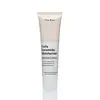What's inside
What's inside
 Key Ingredients
Key Ingredients

 Benefits
Benefits

 Concerns
Concerns

 Ingredients Side-by-side
Ingredients Side-by-side

Water
Skin ConditioningGlycerin
HumectantCaprylic/Capric Triglyceride
MaskingPropylene Glycol
HumectantSqualane
EmollientSimmondsia Chinensis Seed Oil
EmollientHydrogenated Phosphatidylcholine
EmulsifyingButyrospermum Parkii Butter
Skin ConditioningCholesterol
EmollientCeramide NP
Skin ConditioningTrehalose
HumectantSodium PCA
HumectantUrea
BufferingGlyceryl Caprylate
EmollientPolyquaternium-51
Skin ConditioningHyaluronic Acid
HumectantTriacetin
AntimicrobialXanthan Gum
EmulsifyingCarbomer
Emulsion StabilisingTriethanolamine
BufferingEthylhexylglycerin
Skin ConditioningWater, Glycerin, Caprylic/Capric Triglyceride, Propylene Glycol, Squalane, Simmondsia Chinensis Seed Oil, Hydrogenated Phosphatidylcholine, Butyrospermum Parkii Butter, Cholesterol, Ceramide NP, Trehalose, Sodium PCA, Urea, Glyceryl Caprylate, Polyquaternium-51, Hyaluronic Acid, Triacetin, Xanthan Gum, Carbomer, Triethanolamine, Ethylhexylglycerin
Water
Skin ConditioningButylene Glycol
HumectantPropanediol
SolventSqualane
EmollientPolyglyceryl-6 Stearate
EmollientCetearyl Alcohol
EmollientArgania Spinosa Kernel Oil
EmollientChlorella Ferment
Skin ConditioningMalus Domestica Fruit Extract
AntioxidantAllantoin
Skin ConditioningPalmitic Acid
EmollientCoco-Caprylate/Caprate
EmollientBiosaccharide Gum-1
HumectantPolyglyceryl-6 Behenate
Emulsion StabilisingGlyceryl Stearate
EmollientStearic Acid
CleansingCandida Bombicola/Glucose/Methyl Rapeseedate Ferment
AntimicrobialHydrogenated Olive Oil Unsaponifiables
EmollientSodium Acrylate/Sodium Acryloyldimethyl Taurate Copolymer
Emulsion StabilisingCarbomer
Emulsion StabilisingPhenyl Trimethicone
Skin ConditioningSorbitan Oleate
EmulsifyingIsohexadecane
EmollientTromethamine
BufferingPolysorbate 80
EmulsifyingDimethicone
EmollientPentylene Glycol
Skin Conditioning1,2-Hexanediol
Skin ConditioningHydroxyacetophenone
AntioxidantCaprylyl Glycol
EmollientEthylhexylglycerin
Skin ConditioningDisodium EDTA
Water, Butylene Glycol, Propanediol, Squalane, Polyglyceryl-6 Stearate, Cetearyl Alcohol, Argania Spinosa Kernel Oil, Chlorella Ferment, Malus Domestica Fruit Extract, Allantoin, Palmitic Acid, Coco-Caprylate/Caprate, Biosaccharide Gum-1, Polyglyceryl-6 Behenate, Glyceryl Stearate, Stearic Acid, Candida Bombicola/Glucose/Methyl Rapeseedate Ferment, Hydrogenated Olive Oil Unsaponifiables, Sodium Acrylate/Sodium Acryloyldimethyl Taurate Copolymer, Carbomer, Phenyl Trimethicone, Sorbitan Oleate, Isohexadecane, Tromethamine, Polysorbate 80, Dimethicone, Pentylene Glycol, 1,2-Hexanediol, Hydroxyacetophenone, Caprylyl Glycol, Ethylhexylglycerin, Disodium EDTA
 Reviews
Reviews

Ingredients Explained
These ingredients are found in both products.
Ingredients higher up in an ingredient list are typically present in a larger amount.
Carbomer is a polymer of acrylic acid. Its main role is to create a gel consistency.
A high amount of carbomer can cause pilling or balling up of products. Don't worry, most products contain 1% or less of carbomer.
Ethylhexylglycerin (we can't pronounce this either) is commonly used as a preservative and skin softener. It is derived from glyceryl.
You might see Ethylhexylglycerin often paired with other preservatives such as phenoxyethanol. Ethylhexylglycerin has been found to increase the effectiveness of these other preservatives.
Squalane is an emollient that helps the skin hold onto moisture. It's an oily liquid that occurs naturally in certain types of fish and plant oils.
Because squalane boosts hydration in the skin, it also comes with plenty of benefits: it is an antioxidant and can help fight free radicals and skin damage. Squalane is also found to have a detoxifying effect when applied.
Squalane comes from squalene, which occurs naturally within the sebum of our skin. It is one of the oils our skin produces to keep itself hydrated. Squalane is the hydrogenated version of squalene and has a longer shelf life.
Research shows that squalane is non-irritating (even at 100% concentration).
In general, it's a fantastic ingredient. It does a great job at hydrating the skin, and it's suitable for those with sensitive skin.
The source of squalane may impact malassezia / fungal acne. This is because olive oil derived squalane can contain impurities such as fatty acids and plant waxes. Sugarcane derived squalane is recommended for anyone with malassezia concerns.
Is squalane vegan?
This depends on the source. Squalane can be derived from both plants and animals. Most squalane used in skincare comes from plants.
Please note: the source of squalane is only known if disclosed by the brand. We recommend reaching out to the brand if you have any questions about their squalane.
Read more about squalene with an "e".
Is squalane an oil?
Squalane is often called an oil, but it’s technically not; it’s a hydrocarbon, meaning it’s only made of carbon and hydrogen, unlike true oils which are triglycerides made of fatty acids and glycerol.
The term “oil-free” isn’t regulated, so companies can define it however they want. Some exclude all oils, while others just avoid mineral oil or comedogenic oils.
While some people avoid oils thinking they cause breakouts, the right kind of oil (or oil-like ingredient like squalane) can actually help balance and hydrate your skin. It’s worth testing out simple oils or squalane to see what works best for your skin.
Learn more about SqualaneWater. It's the most common cosmetic ingredient of all. You'll usually see it at the top of ingredient lists, meaning that it makes up the largest part of the product.
So why is it so popular? Water most often acts as a solvent - this means that it helps dissolve other ingredients into the formulation.
You'll also recognize water as that liquid we all need to stay alive. If you see this, drink a glass of water. Stay hydrated!
Learn more about Water